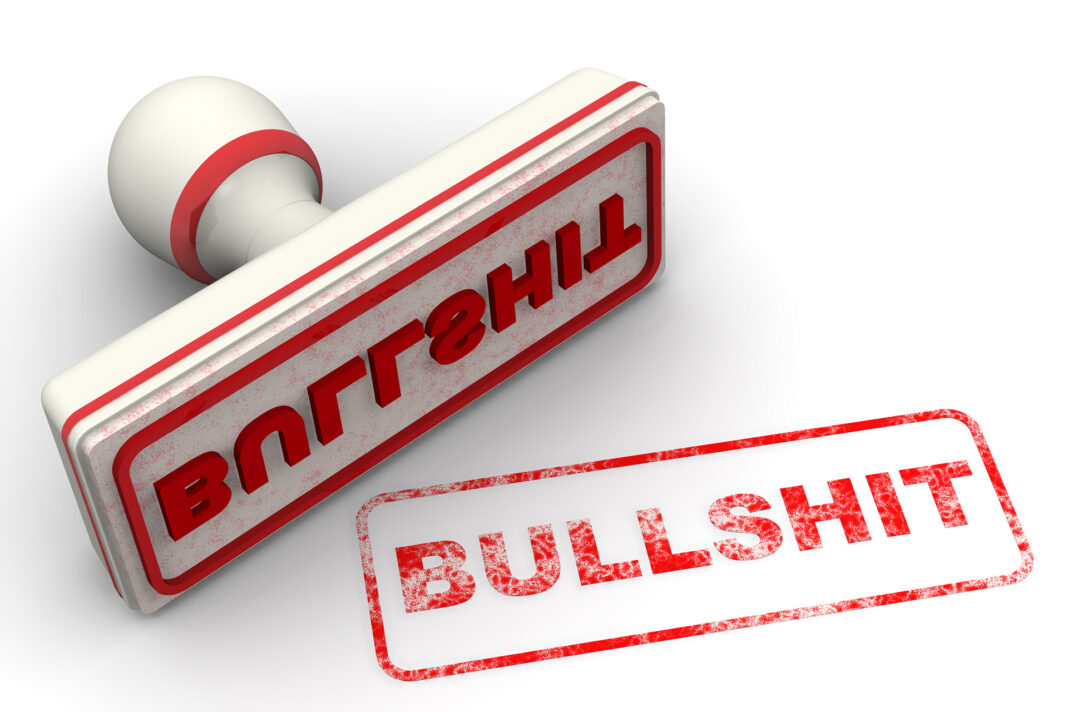While I add a similar disclaimer to all of my public content, it’s particularly important in this case to emphasize that the convictions I’ve expressed in this article are entirely my own. I’ve arrived at these opinions after 30 years of corporate work, but they in no way reflect the views of PwC and are in no particular way inspired by PwC.
Preamble
I have to admit that I am a little surprised to find myself writing a series of articles on ‘organizational bullshit.’ At first glance, this is not my area of specialist expertise. But the more I have reflected on this topic, the more I have realized that I am at least partially qualified to contribute an opinion, as I believe any person is who has spent 30 years working deep in organizations. ‘Organizational bullshit’ is a systemic issue that touches all corners of business, meaning most people who’ve built a career are consciously or unconsciously fluent in its dynamics.
Before you dive into the main content, let me address a few elephants in the room:
Firstly, as you read through these articles you’re going to see the word ‘bullshit.’ A lot. But, this is not mere vulgarity. As you will see, ‘Organizational bullshit’ is a credible and growing topic of academic research. To examine it, understand it and address it, we need to call it by its name.
Secondly, by writing these opinion pieces, I am in no way pointing fingers and suggesting that I am immune to bullshitting. Despite a naturally low tolerance for bullshit, I have also played the corporate game. I have been relatively successful in business, partly because I learned how to balance competence and bullshitability. So, my aim in these articles is not just to shine a light on the phenomenon of organizational bullshit and hopefully help improve the business environment; it’s also to keep myself honest and accountable so that I can constantly get better at this stuff.
As for my motives in writing these pieces: for most of my career, I have received feedback that I can be too direct, even ‘blunt’ or ‘lacking in tact.’ I don’t dispute these comments – I know that I have usually not been particularly diplomatic when I suspect I’m encountering bullshit. As a leader, this has been a struggle sometimes, because while I recognize the need for sensitivity in people management (and have worked at developing this capacity), I’m also careful not to lose the essence of who I am, something that is central to the embodiment of ‘authentic leadership.’ Appreciating corporate bullshit for what it is has not only helped me become better at catching my own bullshit – something I believe every responsible leader should aim to do – but also enabled me to depersonalize it. Hopefully that allows me to be more effective in helping my peers de-prioritize their team members’ bullshitting abilities in performance reviews and promotion cases.
Before focusing on cyber-kinetic security, I was in law enforcement and counterintelligence. For 20+ years, I also ran a non-profit that fought against sexual exploitation of children, and child slavery. So, the well-being of others has always been close to my work and has helped me laser in on what’s ultimately most important. With that clear in my mind, I’ve never had too much time or patience for corporate bullshit, but now it has become even more urgent for me to find a healthy way to reduce bullshit in the teams I lead and work in. As I mention in Part 1, in my area of work – cyber-physical systems security (CPSSEC) / Operational Technology (OT) security / cyber-kinetic security world, previously disconnected specialisms like IT, engineering and management consulting are required to work together. This becomes difficult due to cultural differences, one of which is a varying tolerance for bullshit. So, in trying to make OT / cyber-kinetic security experts out of IT people and management consultants, I need to train them to focus more on objective, measurable, life-saving benefits. We all have to learn to cut the bullshit.
Finally, I recently took a more active role in making PwC Canada an employer of choice for neurodiverse people, and one of the things I’ve learned is that some of the best neurodiverse performers often have a very low tolerance for bullshit and are willing to call it out very directly. I’ve been inspired by this. It has confirmed for me that organizational bullshit needs to be dealt with if we are all to deliver the positive impact we hope to through our work. But it has also made it very clear to me that organizations, and those in leadership, need to learn how to better listen to truth-tellers.
Part 1: Why
In the 1990 black comedy, Crazy People, Dudley Moore plays an advertising executive named Emery Leeson who, in the middle of a nervous breakdown, starts designing blunt, frank ads with slogans like “Buy Volvos – they’re boxy, but they’re good” and “Forget France. The French can be annoying. Come to Greece. We’re nicer.” This drift into truthfulness earns Leeson a stay in a psychiatric facility, but when his ads are accidentally printed and lead to record sales, Leeson and his fellow patients at the sanatorium are hired to be the creative force behind a new brand of “honest” or “no-nonsense” advertising. From thereon, the plot follows a predictable course as Leeson and his crew become the heroes in a battle against the mercenary owner of the advertising firm. However, the filmmaker’s point is still clearly made: advertising is full of bullshit.
There’s nothing particularly groundbreaking about this view, of course. Industries like advertising, sales, and marketing are routinely accused of being built on bullshit, but what the film represents is an intention to call that out; an intention that has, until recently, been mainly missing from broader public discourse; an intention that I passionately share.
Because it’s not just the commercial areas of business that have become infected with bullshit, it’s the whole operation. If you’ve ever sat through a 100-slide PowerPoint presentation, or read a corporate mission statement and wanted to wretch a little, or paged through a case study that had no relationship with reality, or been in a meeting where you felt like you were drowning in jargon and corporate acronyms, or felt confused and bewildered as your CEO “moved to align all stakeholders” during a Town Hall, you’ll know what I mean. It’s painful. It’s wrong. And it has to change.
Not just swearing, I swear
As tempting as it may be, I have not written this article as an excuse to say “bullshit” over and over and thereby vent some of my frustration at the state of the world (although there might be a bit of that too). “Organizational bullshit” is not an expletive; it is an academically referenced term at the center of a broadening body of serious and legitimate research. In his 1986 essay, “On Bullshit,” which later developed into a book by the same name, Princeton philosopher, Harry G. Frankfurt, was the first to look at the phenomenon through a more analytical lens, making it something that can be identified and, therefore, addressed.
Frankfurt proposed that bullshit and lying, for example, are not the same thing. This is not immediately obvious when looking at accepted definitions: the Merriam-Webster dictionary recognizes bullshit as an informal vulgar term meaning “to talk nonsense, especially with the intent of misleading or deceiving,” while a lie is “an assertion of something known or believed by the speaker or writer to be untrue with intent to deceive.”
In both cases, it seems deception is the ultimate goal, but Frankfurt points out the subtle but important difference between the liar and the bullshitter:
“The liar is inescapably concerned with truth-values,” says the scholar. “In order to invent a lie at all, he must think he knows what is true.”
In other words, the liar is defined by having some sort of relationship to the truth, even if what comes out of his mouth is the total opposite. In some perverse way, he respects the truth, at least enough to recognize it as something real and worth subverting.
The bullshitter, however, has no such regard for the truth – in fact, he is not interested in it at all. According to André Spicer, who literally wrote the book on business bullshit:
“Bullshitters do not lie. They don’t try to cover up the gap between what they are saying and how things really are. Bullshitters are indifferent to how things really are. They don’t care about whether their claims conflict with reality. All they care about is whether people will listen.”
The guiding line for this type of person is not truth (honesty) or the corruption of truth (lying), but rather whatever needs to be said to further his own interests (bullshit). This disconnection from truth makes a bullshitter more challenging to spot and more difficult to hold accountable because, in effect, what are they actually doing wrong? Unlike lying, which can be measured against some standard of truth, bullshitting is mostly a mix of exaggeration, inflation, misinformation, misdirection, and (often spectacular) invention.
Upon encountering bullshit, you may have an intuitive feeling that something is untrue, but that does not make it a lie, at least not in any black and white sense. And, to challenge the dictionary definition listed above, bullshitting is not the same as talking nonsense. Nonsense is just, well, nonsense, but bullshit pretends to offer some degree of meaning or truth that is non-existent. This is what makes bullshit so uncomfortable and exasperating to deal with – we know that something is not right, but we can’t quite put our finger on why.
As a result, we usually don’t deal with bullshit; we ignore it or tolerate it, often with a mixture of frustration and resignation. We shake our heads at the politician on TV, grit our teeth at the dinner party guest who knows everything, or inwardly roll our eyes when the boss makes another grandiose claim about the future of the business. This tolerance may be understandable, but it’s not healthy and, in my opinion, makes a bad problem worse, especially in the workplace.
There is a global pandemic of business bullshit, except, for this pandemic, there is no vaccine rollout, and self-isolation is not a solution (no matter how tempting it may sometimes be). Tolerance needs to be replaced with action. Bullshit is not harmless; it needs to be dealt with directly, and the conditions that encourage it need to be addressed.
What is organizational bullshit, where does it come from, and why is there so damn much of it?
Bullshit can be confusing – that’s partly why it’s so difficult to deal with – but as the subject is studied more and more, we are learning ways to recognize it more easily. Analyses by McCarthy et al suggest that there are three components to organizational bullshit:
- Regard for truth
- Bullshit language
- The boss
1. Regard for truth
In his 2006 book, On Bullshit, Harry Frankfurt declares that a bullshitter has “a lack of connection or concern for the truth” and a remarkable “indifference to how things really are.” This type of character is not, however, bullshitting for the sake of it (even though some career bullshitters seem to enjoy the game itself) – there is always something at stake. For those looking to climb the management ladder, bullshit – with its hollow language, denial of facts and data, and vague references to unquantifiable phenomena – is often a helpful tool in establishing an aura of authority. Bullshit makes you sound smarter, more knowledgeable and more qualified than you actually are, making you more likely to be promoted.
Even for those less Machiavellian in their motivations, bullshit can provide people with a sense of self-confidence, something to help them cover the gaps between what they do know and what they don’t. It’s easier to feel empathy for this person than for the one who bullshits purely for raw personal gain, but in both cases, the truth is still subverted to personal interest.
Let’s not be too judgemental here, though. Most people have had to ‘fake it till they make it’ at some point in their career, especially when they find themselves in a new role. There is clearly an element of bullshitting involved in such cases. So, it probably has value if it’s short-term and helps create a bridge to a place where the person can operate from genuine experience and understanding. Bullshit can also have a cultural role to play. Banter and exchanges of general nonsense – none of which have much regard for the truth – are often crucial to keeping a team connected and cohesive. But culture is where things start to get sticky.
Different teams and different organizations have different cultural attitudes to bullshit. In my focus area, the biggest challenge is that we sit between traditional engineers (electrical, mechanical, automation, process etc.), IT, and management consultants. These groups never had to work together before the explosion of cyber-physical systems / Industry 4.0. Now they are forced to collaborate, but they keep failing because of cultural differences, one of them being a much lower bullshit tolerance among engineers when compared to e.g. management consultants.
2. Bullshit language
Business is flooded with bullshit language, and its coziest home is in the painful but ubiquitous jargon that makes up so much of the talk in organizations. McCarthy and his fellow researchers argue that “if a statement is riddled with meaningless language, acronyms, buzzwords, and jargon, then it is likely to be bullshit.” You know the feeling: a meeting in which everyone shares what’s ‘on their radar’, the team tries to ‘align’ or ‘sense check’ before ‘drilling down’ into how to ‘leverage’ a new ‘strategy’ in order to achieve ‘synergies’ (for a head-nodding dig into these terms and other forms of unbearable office jargon check out Steven Poole’s excellent ‘Who Touched Base in My Thought Shower?’).
Of course, there are appropriate and credible ways to use all of these words. But more often than not, in the world of everyday business, they become placeholders for real language. They don’t say what they mean. They are like linguistic balloons of hot air, and they are the main reason people regularly walk out of meetings feeling unclear about what was discussed and what’s expected of them going forward.
Perhaps bullshit language is addictive because it gives people a false sense of security. It helps provide them with a feeling of belonging – if you know what the bizarre mix of jargon and acronyms in your industry or organization means, you’re part of the in-crowd; if not, you’re out. André Spicer maintains this is especially true among managers: “Management jargon can help nurture a sense of self-confidence in the chronically insecure world of middle management.” More than that, Spicer says, managers who wholeheartedly embrace this language and become fluent in it appear more capable and are more likely to rise through the ranks faster. That takes us on to our third point.
3. The boss
Petrocelli argues that people are especially likely to engage in bullshit when they feel knowledgeable about a subject, as many leaders do, and when they are socially and professionally expected to have an opinion, as most leaders are. Finally, bullshit is more common when people sense that they can get away with it, which the authority of leadership helps to ensure. As a result, bullshit in leadership is widespread, and even if the leader is unaware of it, research by McCarthy et al suggests that it does not go unnoticed by their subordinates:
“… employees believe that their superiors are key players in the dissemination of bullshit. Further, employees are likely to have to take action based on any bullshit communicated by their bosses. As a result, employees are likely to be acutely aware when their superiors use bullshit to advance their own self-interests.”
The impact of this pattern is far-reaching and can be profoundly damaging to organizational culture and outcomes. When employees are given bullshit jobs or tasks to perform, they inevitably reach a point where they feel lost and uncertain of their performance. That’s because, by its very nature, bullshit is vague and unclear, so it’s difficult to measure with performance indicators or connect to objectives and results. This is demoralizing for employees who are unable to point to any progress or development, but it also triggers a vicious cycle: without necessary checks in place (see Part 2 in this series), employees have no way of clarifying what is required of them, so they pass the buck further down the chain, usually by adding some extra bullshit to the mix. In the end, the only work that gets done is the work of bullshit, while the central operations of the business, project or team are increasingly neglected.
As a leader of cross-functional teams, I take this aspect of my job seriously –perhaps too seriously if you were to ask some of my colleagues. Quite simply, I know that the level of tolerance for bullshit in my team is set by me. If we are to deliver on what is expected of us, I need to draw a clear line and call bullshit when necessary. That’s not always easy to do, and it’s not always well-received, but it has to be done.
Why this matters
We are living through the Age of Purpose. Gone are the days of businesses having mission statements plastered across their boardroom walls – that’s ‘so nineties’ – nowadays, the fashion is to have a corporate purpose, a defining mantra that describes why the organization exists. In principle, I like this idea. I believe that being clear on why you are doing something can be incredibly valuable, whether you are an individual, a team, or an entire corporation. Or even a mayonnaise.
Unfortunately, corporate mission and purpose statements are a magnet for bullshit. They invite the creation of grand, abstract declarations of celestial intent, full of generic and contextually meaningless terms like ‘impact,’ ‘stakeholders’, ‘people,’ ‘change’, and ‘the future.’ More often than not, these statements bear little resemblance to the genuine operations of the business, fostering cynicism among employees and customers. But that’s not moderating the tendency towards inflationary bullshit. If anything, the trend is getting worse.
As consumers and top talent increasingly consider a company’s values before making buying decisions or deciding where to work, organizations are feeling the pressure to be seen as socially-minded corporate citizens who are committed to making the world a better place for all. Sometimes there is genuine intent behind this, often coming from a maverick CEO, but in the end, it’s the shareholders who’ll have the final say and, since most investors see profit as a business’ primary purpose, high-minded ideas usually stay just that: ideas. As a result, by the time the message reaches the market, it amounts to little more than ‘purpose washing.’ The older cousin of this bent is ‘greenwashing,’ which similarly tries to position the company as having better green credentials than it really does in the hope of attracting ESG investment and improving its brand image among ecologically-minded customers.
It’s easy enough to wave these trends aside as examples of corporate nonsense we just have to live with, but, just like other forms of bullshit, ‘purpose washing’ and ‘greenwashing’ are not harmless. Business will be crucial to solving the wickedly complex problems we face as a species, and bullshit undermines those players who are sincerely trying to help solve these challenges, steering investment in the wrong direction and damaging public trust.
Bullshit also has a debilitating effect at a more micro level. McCarthy et al. suggest organizational bullshit “can result in lower job satisfaction among the organization’s members, increased distrust in leadership, a reduction in productivity, and ultimately a negative impact on overall performance.” André Spicer argues that business bullshit hampers good decision-making, leading to judgment calls separated from facts and data. He also maintains that corporate bullshit, especially when it becomes culturally established, reduces diversity of thinking as those with differing perspectives and opinions are marginalized when their views compete with the interests of the most influential bullshitter(s) in the group. It’s important to note that these conclusions are based on existing research but that there is still not enough empirical data to make these arguments conclusive.
From my experience, the points listed above are all valid considerations, but at its essence, this is a moral issue. In the projects and teams I lead and work in, bullshit threatens our ability to do the job properly. It slows things down, muddies the waters, and lowers the quality of the final product delivered to the client. This is quite simply unacceptable. It’s not right, and I believe organizations should take more deliberate steps to reduce bullshit in the workplace.
How?
Well, that’s the central topic of Part 2 in this series.
Marin Ivezic
For over 30 years, Marin Ivezic has been protecting critical infrastructure and financial services against cyber, financial crime and regulatory risks posed by complex and emerging technologies.
He held multiple interim CISO and technology leadership roles in Global 2000 companies.


































































